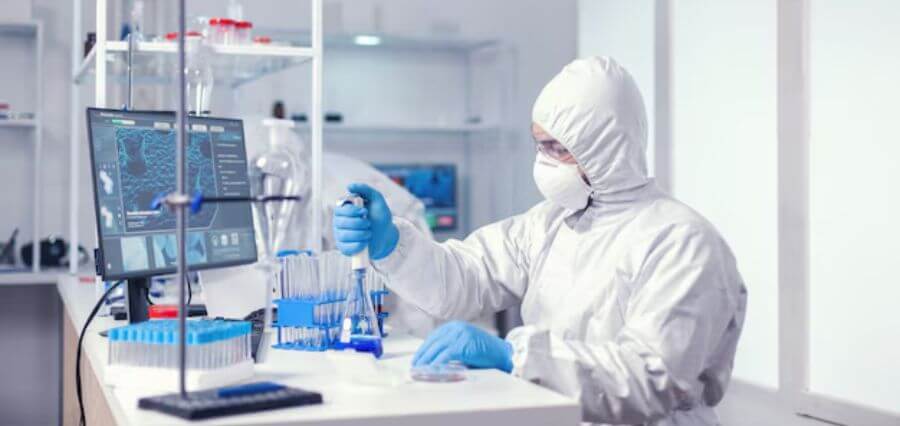Are you making the most out of technology in your laboratory operations? Incorporating the right technology can enhance laboratory efficiency, accuracy, and productivity.
Technology plays a crucial role in modern laboratories. This is from automating routine tasks to ensuring data integrity. As you explore this guide, you’ll discover practical strategies to weigh technology’s benefits. You will also learn to make informed decisions tailored to your lab’s needs.
Ready to optimize your laboratory operations with the right technology? Let’s dive in!
Assess Current Laboratory Needs
This is essential before integrating new technology into your laboratory operations. Start by identifying areas where improvements are necessary. Look at processes that could benefit from automation or precision enhancements.
Evaluate the current equipment and determine if it meets the latest weight measurement standards. Consider if there are recurring issues with data management or workflow efficiency. Understanding the laboratory’s current capabilities will reveal gaps. It will also reveal outdated practices that technology could address.
By exploring these needs, you can pinpoint specific solutions. You can also prioritize which technologies to integrate. This approach ensures that the investment in technology supports improvements. It should also support gains for your laboratory operations.
Identify Key Areas for Improvement
One of the key areas for improvement in laboratory operations is the use of precision scales. Precision scales offer enhanced accuracy in weighing materials. This is crucial for consistent results. Many laboratories struggle with imprecise measurements that affect experiment outcomes.
By investing in precision scales, labs can reduce errors and improve data reliability. These scales ensure consistent results across different experiments and procedures. They are essential for processes that need exact measurements. This includes chemical analyses or pharmaceutical preparations.
Ensuring precision in weight measurements maintains the quality of the laboratory’s work. Thus, precision scales is are vital in improving the accuracy of laboratory operations.
Evaluate Technology Compatibility
This is crucial when evaluating technology compatibility for your laboratory operations. Ensure that any new technology, like Sartorius scales, can communicate effectively. They should be able to communicate with current equipment and software platforms. This is to optimize workflow.
Compatibility reduces the risk of costly downtime due to technical issues. Selecting compatible technology ensures smooth data transfer. It also decreases the likelihood of errors that could compromise results. Moreover, compatibility simplify the training process for laboratory personnel.
The goal is to create a seamless interaction between all technologies. This is to enhance productivity. Technologies offer advanced features that need to align with the lab’s existing infrastructure.
Consider Cost-Benefit Analysis
Conducting a cost-benefit analysis is vital before adopting new technology in the laboratory. It ensures that the investment in technology yields significant returns. Begin by evaluating the initial costs of new equipment and software.
Consider the long-term savings from improved efficiency and reduced errors. Compare these savings against the investment costs to see if they justify the expense. Include factors like potential repair costs and training expenses in your analysis.
A thorough evaluation helps in making informed decisions about technology adoption. This approach guarantees that the benefits outweigh costs. It also aligns technology investments with laboratory goals.
Prioritize User Training and Support
These are vital for the successful integration of new technology in laboratory operations. Employees need clear instructions to understand how to operate new tools effectively. Simple training sessions can help staff become comfortable with the technology.
Regular updates and refreshers ensure that everyone stays knowledgeable about any changes. Having a support system in place is equally important. Reliable support helps promptly address any technical issues that arise. This reduces downtime and helps maintain productivity.
Laboratories can maximize the benefits of their technological investments. This is by prioritizing training and support.
Data Security and Compliance
Data security and compliance are critical components in laboratory operations. Protecting sensitive data is paramount to maintaining trust and meeting legal requirements. Laboratories handle vast amounts of data daily, from research results to personal information.
Implementing robust security measures helps prevent data breaches and unauthorized access. Compliance with regulations ensures that laboratories operate within the legal framework. Adhering to data protection laws minimizes the risk of penalties and legal issues.
Regular audits and updates of security protocols keep laboratory data safe from evolving threats. By prioritizing data security and compliance, laboratories can focus on their core research. This is without unnecessary distractions.
Explore Integration with Existing Systems
Integrating new technology with existing systems is essential for seamless laboratory operations. It helps maintain consistent data flow and operational efficiency. Start by identifying current systems in use and understand their capabilities.
Evaluate how new technology can complement these existing systems. Avoid choosing tools that may cause system incompatibilities or require extensive modifications. Consider the ease of data transfer between the old and new systems.
It is important to ensure that team members can easily adapt to the integrated systems. Successful integration leads to increased productivity and streamlined processes in the laboratory.
Analyze Long-term Scalability
Analyzing long-term scalability is crucial when implementing new technology in laboratory operations. This means considering whether the technology will still meet the laboratory’s needs as the lab grows. Look for tools that offer flexibility and can handle increased workloads.
Choose technology that can adapt to future changes in the laboratory environment. Scalability helps in avoiding frequent replacements or costly upgrades. It is important to project future needs and ensure that the current technology can support them.
Continual growth should not compromise the effectiveness of operations. By focusing on scalability, laboratories ensure sustained success and efficiency over time.
Gather Feedback from Laboratory Staff
Gathering feedback from laboratory staff is essential for successful technology integration. Staff can provide valuable insights into how new tools affect daily operations. Their feedback helps identify areas needing improvement or adjustment.
It is important to have open communication channels for staff to express concerns. Encouraging feedback fosters a sense of involvement and ownership. This leads to higher acceptance of new technology among staff.
Regular meetings or surveys can be used to gather input. Consistent feedback ensures ongoing improvement and adaptation in the laboratory.
All About Technology in Laboratory Operations
In conclusion, embracing technology is key to enhancing laboratory operations. Labs can improve precision and efficiency. This is by assessing current needs and exploring suitable technologies.
With proper integration and staff training, modern tools can revolutionize workflows. It also maintains high data quality. As laboratories evolve, focusing on technology compatibility and scalability ensures ongoing success.
Looking for more tips and ideas? We’ve got you covered. Check out some of our other posts now.
Read More: Click Here










